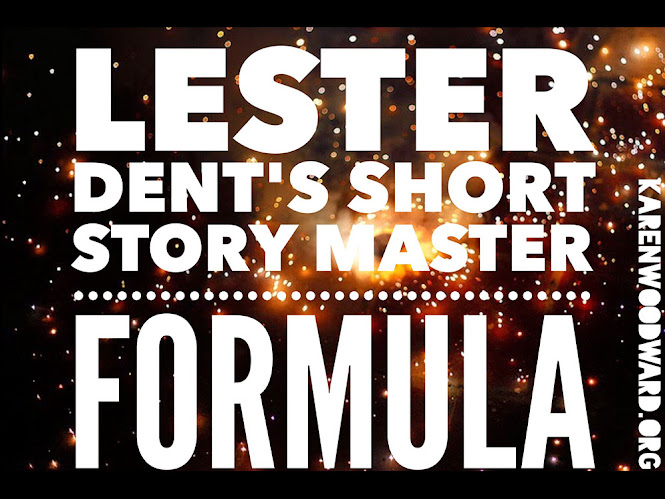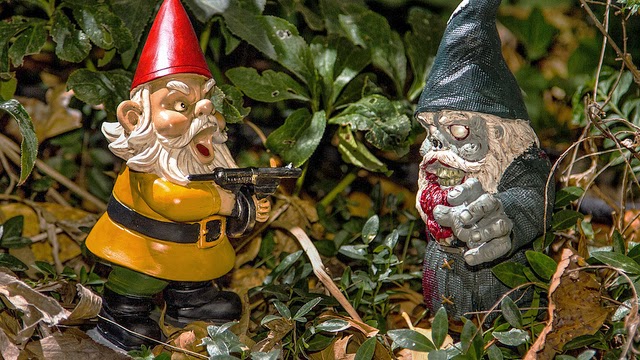This post continues the series on Dan Well's 7-Point Story Structure (Introduction, The End & The Beginning).
You see a pattern here. First (as we discussed last time) we figure out how we want the story to end. Does the hero win the day? Lose big? Based on that, we start constructing our arc, how the hero changes over the course of the story.
It's the same here. Knowing what happens at the midpoint helps us set up what's going to happen at the first plot turn.
Story Arc
I talked a bit about this last time, but it bears repeating. I think that in writing there are no rules but one: there must be change. That said, what shape that change takes is completely up to you.
In general, there are two kinds of change, two sorts of opportunities for it: change in your plot and change in your characters. Let's call this external change and internal change.
External Change
All dramatic stories have external change.
Indiana Jones and Raiders of the Lost Ark is one of my favorite movies but let's face it, Indy doesn't change. And, frankly, that's part of what I like about that movie. It's an action-adventure movie and isn't apologetic about it.
But Raiders has a lot of external change. At the start of the movie Indy gets his prize--a golden idol--taken from him by Dr. Rene Bellog. At both the beginning and the midpoint Bellog says to Indy, (this is a paraphrase) "Anything which you have is mine to take." What happens at the end of the movie? Bellog is dead--face melted off--and Indie has the ark. So there's change. External change.
Internal Change
In most stories the main character will have both internal as well as external goals.
I read something the other day about Charlie and the Chocolate Factory. I think it was the blog of one of the screenwriters from that movie. He pointed out that Charlie doesn't change. And I thought about it. That's true. He doesn't. Willy Wonka does.
One of the nifty things about internal change is that, often, by meeting his internal need (the internal need drives the change) the hero finds the good trick out of the predicament he is in, often around the "all hope is lost" point.
(Maybe your story won't have an all-hope-is-lost point, and that's fine. But if it does, having your main character's solution to his internal problem help him figure out how to meet his external need is a neat trick.)
Shape of the Arc
The shape of the arc--this applies to both internal and external arcs--is completely up to you.
Often, a hero will start off weak, go through struggles, fail some--okay, fail a lot--but grow and change and, by the end, be strong enough to defeat the Big Bad.
But that's not the only shape the arc could take. In a tragedy, the hero ends weak--he doesn't achieve his goal and often loses his life and/or the lives of those he loves. But that doesn't mean he has to start off strong. He could start off weak, become strong, then come crashing down.
That said, if you're not writing a tragedy, often writers start the hero off weak and become strong. This is what Dan Wells does. But that doesn't mean the hero has to start off weak. They could start off strong, become weak, then become strong again. In actuality, the number of possible combinations is constrained only by your creativity.
There is only one constant, one rock-hard rule: there must be external change. (I mean, think about it. What would a story be without external change? A straight line. Reading such a thing would make watching paint dry look like a death match.)
The Midpoint
At some point around the middle of the story the hero will start to move from their beginning state to their end state.
For simplicity, let's say the hero ends on a note of strength. He achieves his goal, saves the day, gets the girl. Whatever. In this case we'd start him off weak. The town bully kicks sand in his face and goes off with the girl he has a crush on. And that's a good day for him.
(Of course you could take him/her from strength to weakness then back to strength again, or any combination you could think of.)
In any story, this transition isn't going to happen all at once, and the hero is going to relapse/fall back a time or two, but the midpoint marks a sea change. The hero is no longer a passive explorer of his new situation, of the Special World, now he takes the fight to the enemy.
As Dan Wells says--and also Larry Brooks and a number of others--the character moves from REACTING to events to ACTING on his own. In The Usual Suspects Keton kidnaps Keyser Söze's lawyer and tries to force him to give up his boss. The attempt is both short-lived and unsuccessful, but he tries, he takes the reins, or at least attempts to.
After the midpoint the hero will increasingly take the initiative. He will lead rather than follow, he will guide rather than be guided.
Further, this decision to stop running, this decision to turn and attack, has to be conscious. The hero must make it consciously and with intent.
A few things to keep in mind about the midpoint:
- In general, the midpoint will parallel the resolution of the story. If the hero achieves his goal at the end then the hero will have some degree of success at the midpoint.
- Also, at the midpoint the hero will receive some information about his adversary--his nemesis/the Big Bad/the antagonistic force. This new information changes the way the hero understands/looks at/perceives the antagonistic force, at whatever force prevents the hero from attaining his goal. He gets a clearer picture and, as a result, his understanding of the story world--as well as his place in it--shifts.
Larry Brooks points out that sometimes it is only the audience that receives this extra information (see: story structure series: #6--Wrapping Your Head Around the Mid-Point Milestone.)
That's it for today! Next time we'll talk about the First Plot Turn.
Links:









